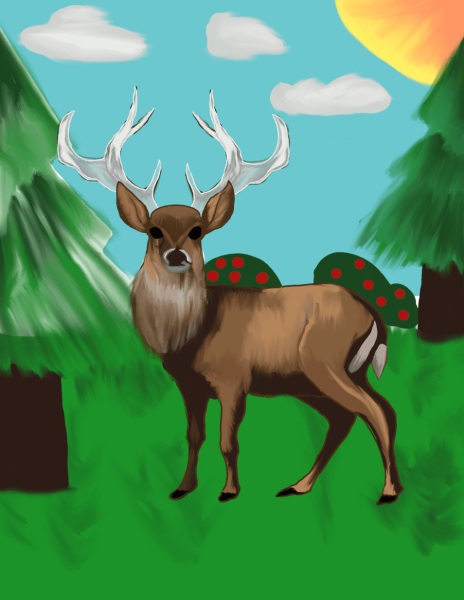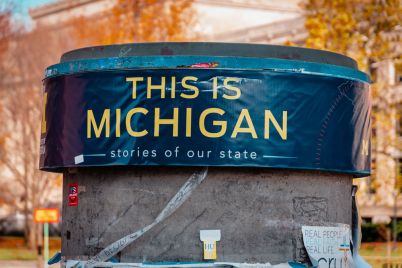
It has been eight years since the release of the last deer management plan from the Michigan Department of Natural Resources (MDNR). Zeinab Agbaria | Washtenaw Voice
Beck Elandt
Contributor
A man and a deer walk into a bar. Then another deer walks in, and another, and they just keep coming. As wild as it is, this is a way to describe the white-tailed deer in Michigan today.
It has been eight years since the release of the last deer management plan from the Michigan Department of Natural Resources (MDNR). “The mission: to maintain a healthy white-tailed deer population.” as mentioned in their 2016 Michigan Deer Management Plan.
The Michigan Deer Management Initiative has emerged with the “Lower Peninsula 2024 Final Report,” challenged with “extreme deer densities [either too high or too low]” concerning habitat and population.
“We should be worried,” says Samantha Courtney, a deer biologist at the MDNR, who is concerned about increasing density in the lower part of the state.
“There’s just a lot of resource availability, and hunter numbers are declining,” Courtney said. “Humans develop as a species by building communities where deer can avoid hunters due to city and municipality limitations.”
According to Step Outside Ann Arbor, a local outdoor site, “All buildings and public roadways have a safety zone of 150 yards where hunting is not permitted.”
Culls or hiring private sharpshooters to shoot deer in a specific region with the city’s permission are options for dealing with deer numbers.
“This is the third cull of deer by the university in the last seven years, with the others occurring in 2015 and 2018,” M-Live media reports, referring to the University of Michigan Dearborn, where Michigan’s most recent cull took place in February 2022.
Amidst the city of Ann arbor’s 2016 deer cull, which took place in february, a survey showed that 45% of respondents were against lethal methods for handling deer, and that 63% of respondents reported damage from deer to their landscape or gardens in the last 3 years, as released in the “City of Ann Arbor Deer Management Report 2016.”
“In 2023, more than 58,000 vehicle-deer crashes occurred across Michigan in rural, suburban, and city settings,” according to the MDNR. While deer can be a large inconvenience to motorists of all kinds and wreak havoc on the occasional flowerbed, many people still find deer to be likable.
“I think they’re really pretty,” says Dezirae Hohenthaner, a nursing major at WCC. “I don’t like the idea of killing, but killing them might be the easiest answer.”
Even though the extermination of deer seems like an easy feat, the MDNR has struggled to keep hunters hunting and inspire new ones to follow in their footsteps.
“It takes a lot to go out and hunt and harvest a deer, so we’re seeing that older generation dropping out, and younger generations just aren’t being recruited into hunting or staying in it,” Courtney said. “It’s worth noting that 64% of the total funding the DNR [Department of Natural Resources] received in 2023 was through hunting and fishing license fees, which circulate through all department parts.”
While the number of hunters is declining, a few still find the activity beneficial and enjoyable.
“It’s called buck fever. It happens to most hunters, at least most beginner hunters, where you’re excited and you just can’t wait for this moment [encountering a good deer] to happen,” reveals Griffen Tokarski, a hunter who is working towards a welding certification at WCC.
Buck fever happens when a hunter spots a good deer and can barely think straight. It highlights the thrill of not seeing a deer after hours or sometimes days of hunting and then suddenly having a shot to take.
To be resourceful, Tokarski takes his deer to Jerome’s Meat Market. “They use the entire deer so nothing goes to waste. If we don’t have room in our freezer, we’ll give it to neighbors, food banks, family, or friends,” Tokarski said.
For more information about deer management, visit the DNR’s website: https://www.michigan.gov/dnr/managing-resources/wildlife/deer


